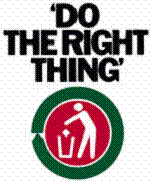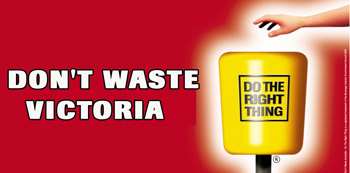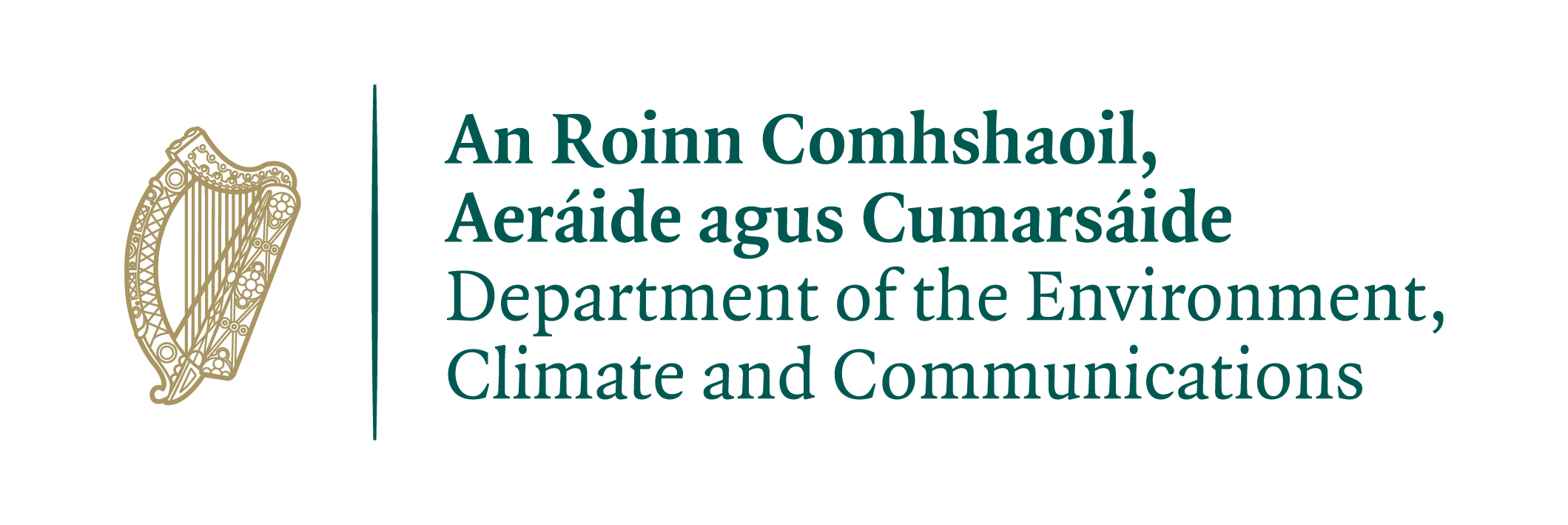LITTER BEHAVIOUR STUDIES IN NEW SOUTH WALES, AUSTRALIA
Introduction
The national study of Australian littering behaviour is the world’s largest study of littering behaviour. It was the first major study in any country to compare what people say about their littering behaviour with what they really do. The methodology used in the study was designed to address these issues, by using a combination of observational, attitudinal and behavioural approaches to research. The overall aim of the project was to demonstrate the impact of litter prevention and waste related minimisation initiatives on public place disposal behaviours.
Methodology
In order to assess the effect that litter prevention activities would have on public place disposal behaviour, litter behaviour surveys were carried out. Four public places were chosen for monitoring and sites were characterised. Two of the sites were located inside and outside of a railway station. One was on a beach, and the fourth was located at a shopping mall.
Stages
The surveying phase of the study involved five stages. The first of these was the benchmarking stage in which baseline information was obtained regarding litter disposal behaviour at the selected sites. The second and third stages involved measuring the impact of adding anti-littering signs and installing new litterbins at each of the chosen sites. Stage four involved the addition of recycling facilities to the sites and monitoring the impact that these facilities had on disposal behaviour patterns. Finally, the fifth stage formed a follow up stage with the objective of assessing the long term impacts of the anti littering activities.
Stage 1: Benchmarking
The purpose of the benchmarking stage was to obtain baseline information through establishing patterns of disposal behaviour methods at selected sites. Baseline information was compiled from the results of litter surveys carried out by means of visual counts, bin audits which consisted of counting and classifying bin waste, observing the littering behaviour of passing pedestrians at the site, and finally interviewing the subjects of the observations.
 It was found from the litter surveys and bin audits that 74% of litter items were cigarette related. Also, most interviewees felt that in general, people do not litter and that litter pollution is an important issue, yet some admitted to having littered in the last 24 hours. Of the people who had been observed littering, 33% admitted that they had littered, 28% denied having ever littered, and 14% felt unsure as to whether or not they had littered in the last 24 hours.
It was found from the litter surveys and bin audits that 74% of litter items were cigarette related. Also, most interviewees felt that in general, people do not litter and that litter pollution is an important issue, yet some admitted to having littered in the last 24 hours. Of the people who had been observed littering, 33% admitted that they had littered, 28% denied having ever littered, and 14% felt unsure as to whether or not they had littered in the last 24 hours.
 Stage 2: Addition of Anti-Littering Signs
Stage 2: Addition of Anti-Littering Signs
The second stage involved recording the immediate impact of adding anti littering signs to the chosen sites. Two types of signs were installed, the nature of which was positive reminder signs and negative consequence signs. Both types were introduced at all sites to achieve a balanced presentation.
Further to installing the signage, the litter surveys, bin audits, littering behaviour observations and interviews were repeated. The following observations and results were obtained:
The proportion of people using bins at the sites increased.
The proportion of people littering decreased.
The proportion of people pocketing and carrying away waste increased.
Littering behaviour that had been observed became more surreptitious.
It was concluded that the impacts of signs may be relatively short lived. For more lasting changes to disposal behaviour, other supporting anti-litter actions may be required.
Stage 3: Addition of Street Litterbins
The third stage of the study involved introducing new litterbins to all four sites. The style of the litterbin chosen reflected the character of the area and the size reflected the amount of litter in the area.
In order to assess the impact of the new bins, the procedure of litter counts, bin audits, littering behaviour observations and interviews was repeated. Immediately after installing the new bins, no consistent impact was found on the visual counting of litter at the sites. Furthermore, the bin audits resulted in no consistent change in the amount of litter deposited in the bins at each of the sites. However, it was noted that more cigarette butts were found in litterbins with ashtrays.
The interviews revealed that the installation of the anti-littering interventions resulted in a moderation in peoples views about the effectiveness of the interventions. Their opinions changed based on experiencing the new initiatives. In comparison to introducing anti littering signage, no change in overall bin use further to installing new bins was observed. This may be a case of diminishing returns, and it was concluded that the consequence of new litterbins depends on site-specific factors such as placement and design.
Stage 4: Addition of Public Place Recycling Facilities
Stage four involved assessing the impact of installing public place recycling facilities at each of the sites. These facilities took the form of commingled bins, the type of bin at each site reflecting the characteristics and aesthetics of the particular site.
Conflicting results were again observed. The amount of litter on the ground and the amount binned depended on the site in question, in some cases litter decrease and in some it increased. People’s attitudes about the effectiveness of recycling facilities became less extreme following their installation.
Overall, after recycling facilities were installed, the increase in the amount of items binned was greater than the decrease in litter. This was due to the decrease in the number of objects carried out of the site and pub in pockets. Some people treated the facilities as general litterbins, leading to contamination of the recycling bins.
Stage 5: Follow Up
 The final stage of the study was an assessment of the long-term impact of the anti littering initiatives. This stage revealed that litter survey results did not seem to relate to the impact of interventions on littering behaviour. The bin audits yielded a useful indication of the effects of interventions in terms of the pattern of items found therein. Overall, the proportion of people littering had decreased on the sites, and on sites where antilittering signs only were installed, littering returned to baseline levels. It was concluded that people use bins more frequently than they litter. Also, most littering takes place close to litter prevention and reduction facilities, thus attention should be focused around those facilities.
The final stage of the study was an assessment of the long-term impact of the anti littering initiatives. This stage revealed that litter survey results did not seem to relate to the impact of interventions on littering behaviour. The bin audits yielded a useful indication of the effects of interventions in terms of the pattern of items found therein. Overall, the proportion of people littering had decreased on the sites, and on sites where antilittering signs only were installed, littering returned to baseline levels. It was concluded that people use bins more frequently than they litter. Also, most littering takes place close to litter prevention and reduction facilities, thus attention should be focused around those facilities.
findings
The findings of the study include information on the effect of anti littering initiatives on a particular site. They also reveal the answers to the who, what, where, when and who questions regarding littering behaviour. The study provided an opportunity to compare attitudes to litter and littering behaviour and also to identify the important factors that relate to littering behaviour.
Anti littering initiatives
The study revealed that the number of available bins will not decrease littering behaviour. Guilt is not an effective deterrent for litterers, whereas successful deterrents may include fines, improved parenting, advertising and personal and community responsibility.
Who, what, where, when, how
Who litters?
All age groups are more likely to use litterbins than to litter, and there are no major differences between males and females. Groups may have an effect on certain age groups in that 15-24 year olds are more likely to litter when in groups, and over 24 year olds are more likely to litter when alone.
What is littered?
People are more likely to bin than litter beverage containers and newspapers. However, they are more likely to litter cigarette butts than to bin them. Over one third of people don’t consider organic waste such as apple cores to be litter. Bottles, cans and food wrappers are almost always considered litter. Newspaper and cigarette butts are generally considered litter but 87% of these people littered cigarette butts.
Where does littering occur?
Litter is often deliberately placed in certain locations. A lot of littering occurs where it can be hidden. Over 50% of littering occurred within 5m of a litterbin. Higher rates of littering were observed in sites that were already littered.
When do people litter?
Littering is most likely to occur when large numbers of people are eating or drinking outside in a public place, in these instances bins are also more frequently used. Littering was found to be proportional to the number of people at a site carrying disposable objects rather than merely the number of people at a site. Littering was most often observed at lunchtime on weekdays. Special activities on weekends involving food and drink also result in increased rates of littering. These occasions also provided the highest proportion of people using bins.
How do people dispose of objects?
Binning versus littering habits involves a complex list of factors that is non-exhaustive. These factors include the following:
the type of object
the type and placement of bins at the site
other bin like objects in the vicinity
the time available for disposal
environmental factors
whether the litterer is alone or in a group
the person’s attitudes
their skill at monitoring their own behaviour and the disposable objects
Comparing Attitudes and Behaviour
The study revealed major differences between the attitudes and behaviour of litterers. There were often large differences between the manner in which people reported their behaviour and observations of their actual behaviour. A rigid two-way distinction between people who litter and people who use bins is not useful in identifying targets for prevention programmers. Some litterers arrange their litter tidily and others discard it carelessly. Some people bin certain objects and litter others. The most common reasons for littering reported were:
no bin being nearby
habit and forgetfulness
the inconvenience of continuing to hold on to the waste material
there was no ashtray available
Litter prevention measures
A range of strategies needs to be developed and implemented that encompasses social, attitudinal and environmental factors, in order to combat littering behaviour.
Social
All age groups and both sexes must be targeted. Account must be taken of differences in littering patterns and the fact that people are not aware of their actions.
Attitudinal
No consistent correlation exists between behaviour and attitudes. It is necessary to study further what attitudes are associated with specific littering patterns.
Object related
Those who litter beverage containers are likely to litter other objects. Those who bin cigarette butts are likely to bin all of their waste. Most people who littered cigarette butts considered them to be litter. Also the function of recycling bins needs to be addressed.
Environmental
The design, placement and location of bins influences littering behaviour. The nature of a site is also a factor in that some sites may have a tradition of being heavily littered. Other sites such as beaches may have a tendency to be littered by people burying rubbish under sand.
It is important to note that litter reduction strategies should be implemented with behavioural change as a goal The success of such strategies should be assessed by measuring changes in actual, observed behaviour rather than attitudes or self-reported behaviour.
Outcome - The Disposal Behaviour Index
A major outcome of the Litter Behaviour Studies is the development of the Disposal Behaviour Index (DBI), a benchmark for litter disposal behaviour. It is a mathematical means of reflecting littering behaviour and bin use. The DBI expresses the amount of binning, recycling composting and littering observed in an area. Therefore, in calculating a value the amount of positive disposal behaviour, i.e. bin use should be as important as identifying littering, therefore both are measured. Values can be obtained for particular site types and compared with other sites of the same type to obtain an average. There are seven levels of DBI characterised by varying degrees of littering to bin use.
|
DBI Level |
Description of disposal behaviours in a site for each level of DBI |
|
1 Low |
Little use of bins, clear majority of people littering. Area is a litter “hot spot” requiring urgent attention and is a priority for clean up. |
|
2 Base |
High proportion of people littering with base level of bin use. Prompt action is required to bring litter rates down and to increase binning. |
|
3 High Base |
Binning is greater than littering. Action is needed to create opportunities for effective recycling and to reduce expected littering behaviours. |
|
4 Mid Range |
Bins used twice as much as people litter but there is potential for improved behaviour as littering can be reduced and bin use improved. |
|
5 High Mid |
Sites where people were clearly Doing the Right Thing but where littering or inappropriate use of bins remains an issue to be addressed. |
|
6 High |
Binning greatly exceeds littering and appropriate bin use occurs most of the time. Minimal action required to fully recover resources and prevent litter. |
|
7 Peak |
Minimal littering with prominent and appropriate bin use and good potential to recover resources. Maintenance required for clean and largely litter free area. |
The DBI can monitor positive improvements in behaviour as well as changes in littering. It can also determine the effectiveness of interventions for reducing litter and increasing recovery of used containers and other recyclables.
References
R.Curnow, P. Streker, E. Williams, Understanding Littering Behaviour in Australia: A Review of the Literature, 1997, Beverage Industry Environment Council,
E. Williams, R.Curnow, P. Streker, Understanding Littering Behaviour in Australia, 1997, Beverage Industry Environment Council
Littering Behaviour Studies III, Measuring Environmentally Desirable Behaviour, 2001, Beverage Industry Environment Council and Community Change


